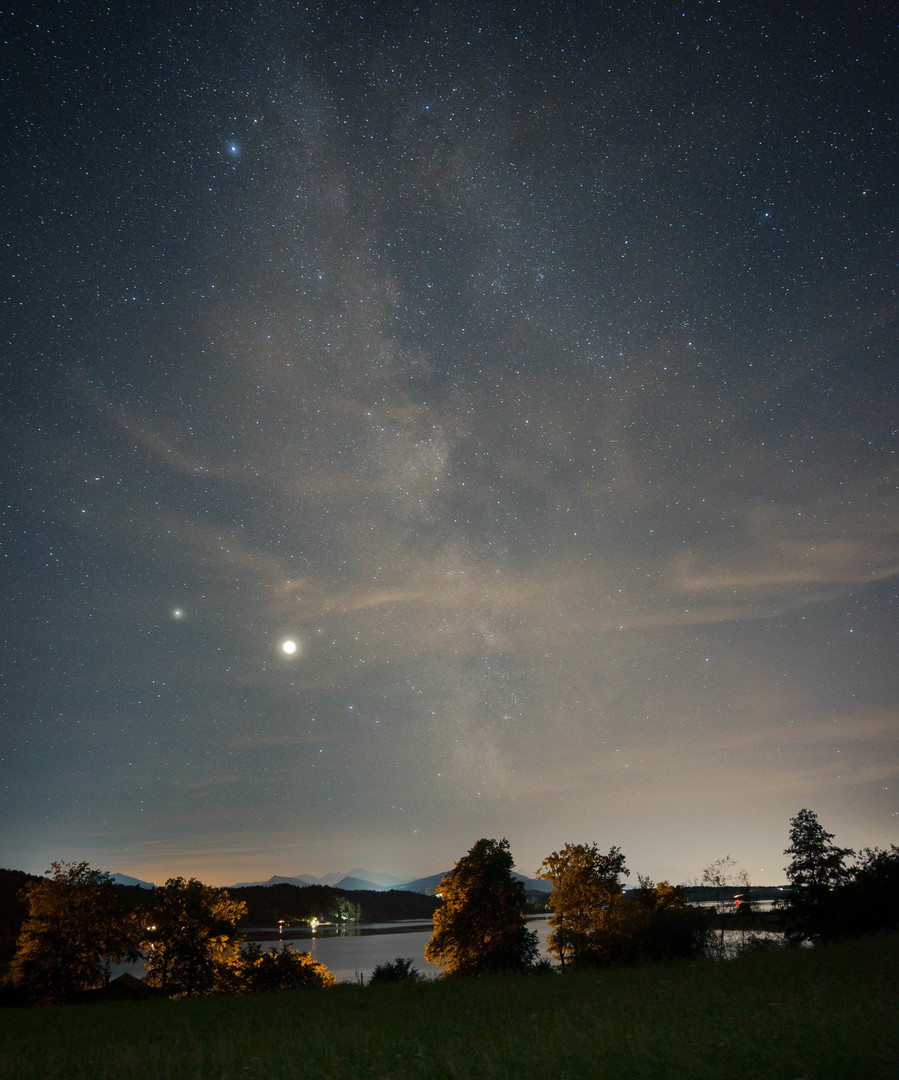













































Top Spots for Stargazing and Astrophotography on the USA's West Coast: Night Sky Photography Tips Included
The iconic West Coast road trip destination, illuminated under the stars.
USA West Coast Video
Don’t miss my video 'USA West Coast Wonders | A Journey from Dawn to Dusk', where I’ve compiled all my timelapse footage into one stunning final video. This video captures an 'entire night' in the USA, starting with timelapses of the sunset, transitioning to the rising stars, and concluding with calming timelapses of dusk.
The West Coast of the United States of America (USA) is a very popular destination for a road trip due to its stunning variety of landscapes, vibrant cities, and world-renowned landmarks. From the golden beaches of California to the rugged coastline of Oregon and the awe-inspiring Grand Canyon, the West Coast offers a unique combination of natural beauty and urban excitement. Travelers can explore iconic spots like the Pacific Coast Highway, Yosemite National Park, and the bustling streets of San Francisco or Los Angeles. With its diverse climates, outdoor adventures, and cultural attractions, it's the perfect destination for those seeking both relaxation and adventure on a single journey.
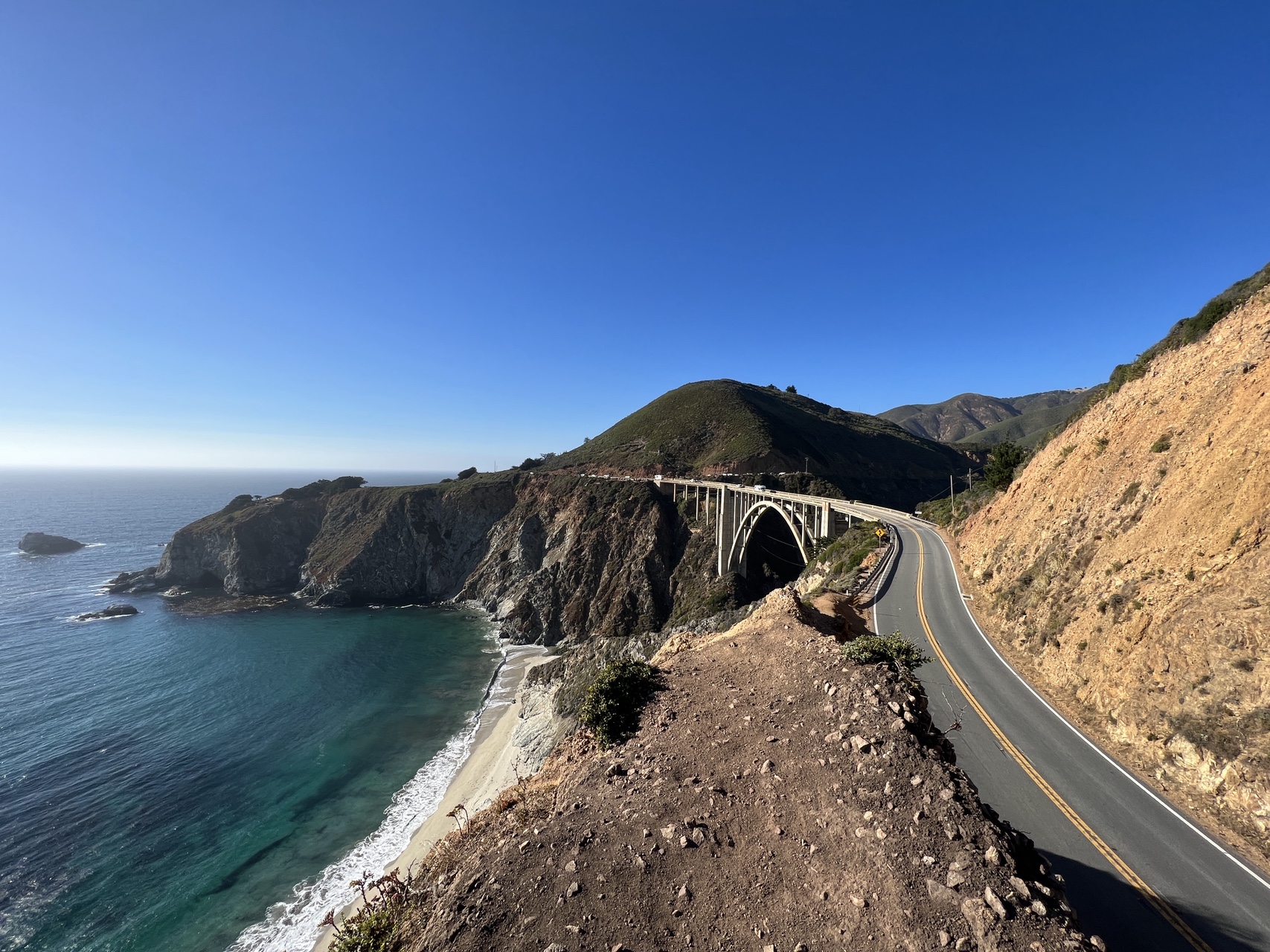
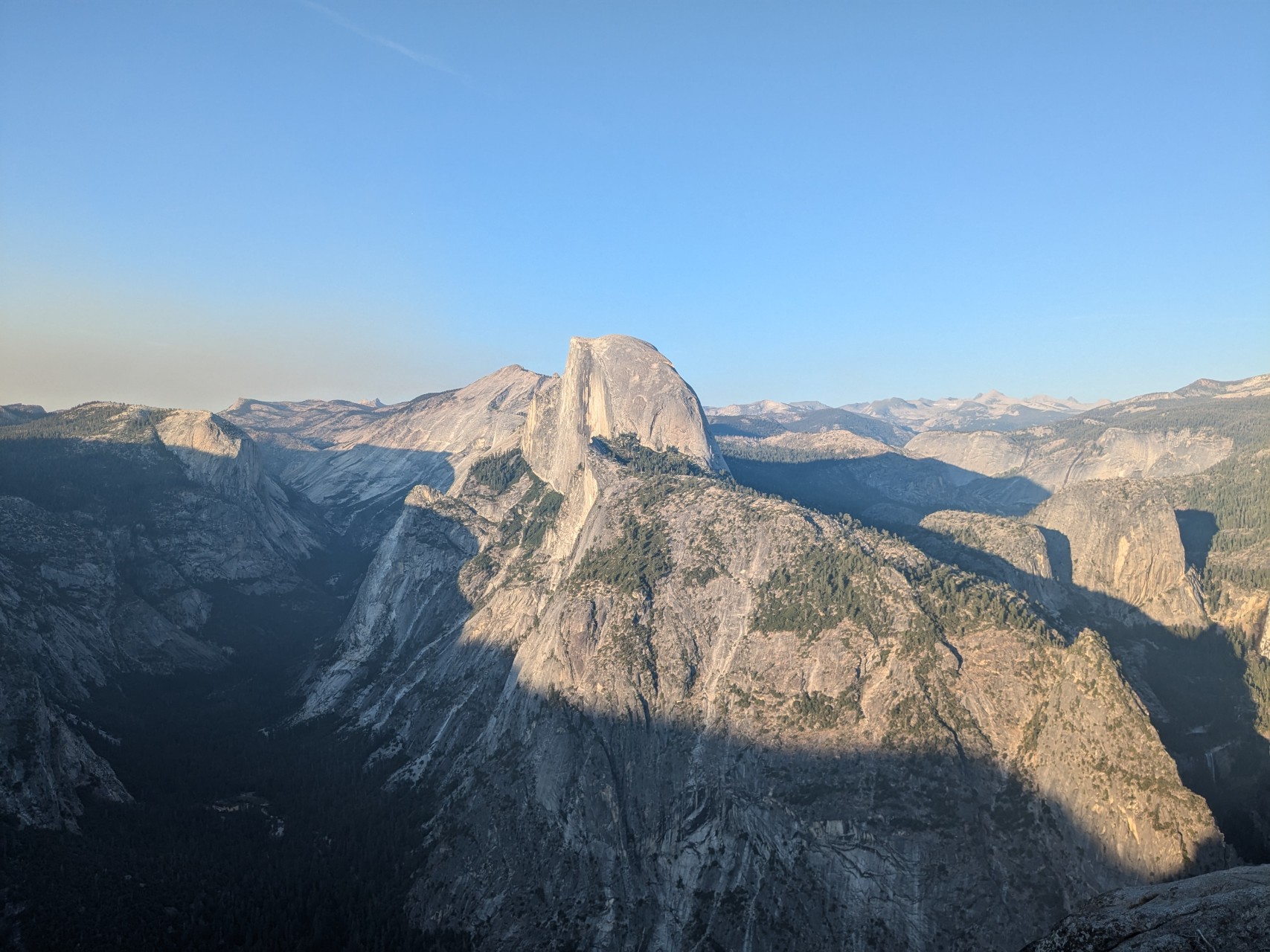
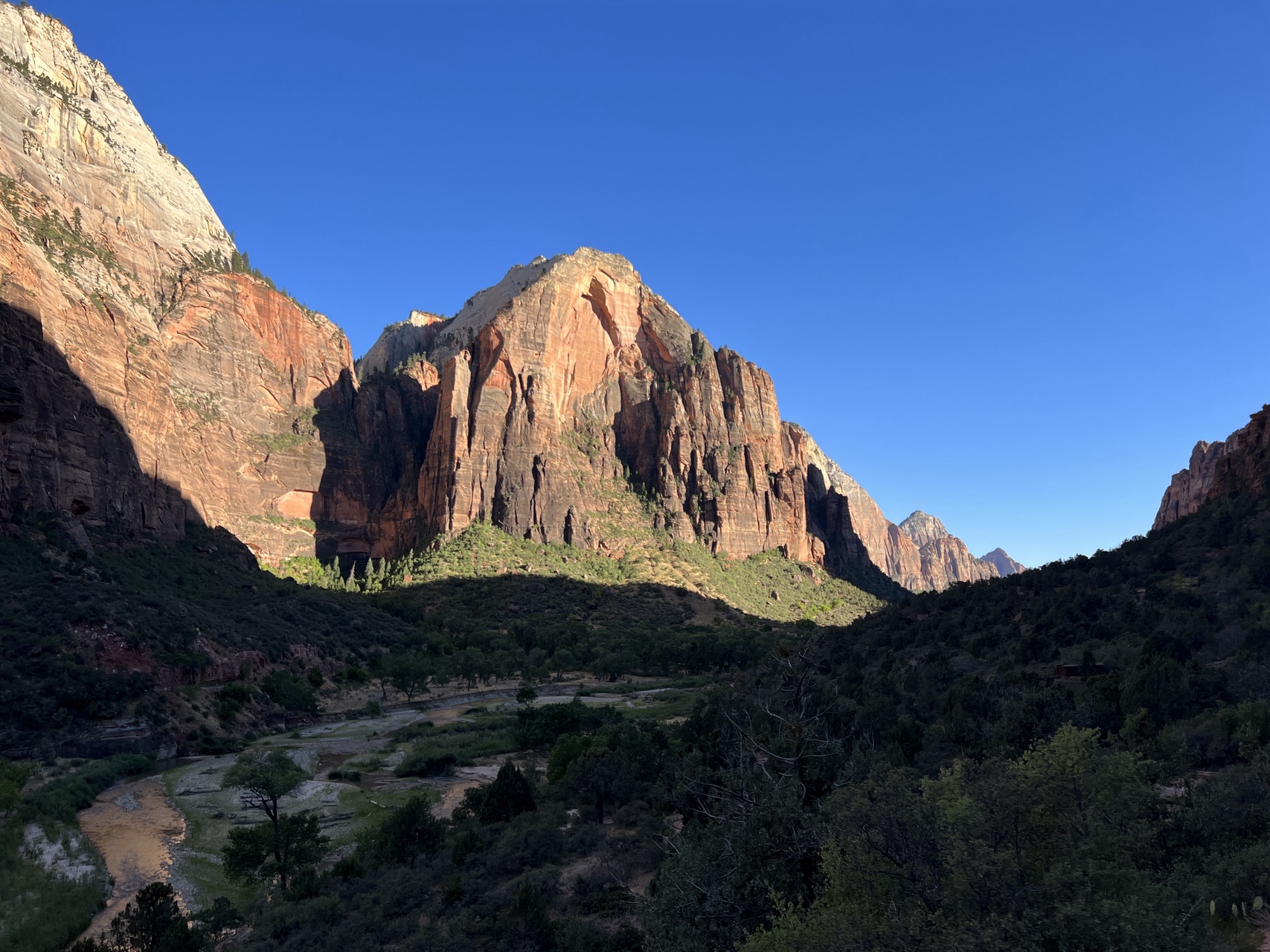
The West Coast of the USA is not only a prime destination for road trips but also a hidden gem for astrophotography enthusiasts. With its wide-open spaces and minimal light pollution, the region boasts some of the darkest skies in the country. Areas like the Mojave Desert, Death Valley, and the Anza-Borrego Desert State Park provide the perfect backdrop for capturing the wonders of the night sky. Beyond just dark skies, the West Coast is home to a wealth of fantastic foreground objects, from rugged deserts to ancient trees, which make for compelling compositions in your astrophotography shots. Furthermore, many iconic observatories and renowned astrophysical locations, such as the Griffith Observatory in Los Angeles and Mount Palomar Observatory, attract stargazing enthusiasts and professional astronomers alike, making the region a must-visit for anyone passionate about capturing the stars.


We began our journey in July 2024, with four weeks to explore the most iconic route on the West Coast. Our adventure kicked off in Los Angeles, from where we drove to Joshua Tree National Park, then on to the Grand Canyon. Afterward, we made our way to Page, famous for the iconic Horseshoe Bend, and then to Monument Valley. Initially, we didn’t plan on visiting Arches National Park, but after hearing so many recommendations, we decided to add it to the itinerary – and it turned out to be one of our favorite spots. From there, we headed to Bryce Canyon and Zion National Park, both of which we can highly recommend. After Zion, we took a detour through Valley of Fire before stopping in Las Vegas and braving the scorching temperatures of Death Valley. We then traveled north to Lake Tahoe, only to turn back south to visit Yosemite and Sequoia National Parks. After Sequoia, we made our way to San Francisco, then drove along the scenic Highway 1 back to Los Angeles, where we wrapped up our road trip. Throughout the journey, we traveled in a mid-sized SUV, sleeping in the trunk to save on accommodation costs. An air-inflated mattress in the back was surprisingly comfortable, though the high temperatures, especially in the southern part of the trip, made some nights a bit tough.


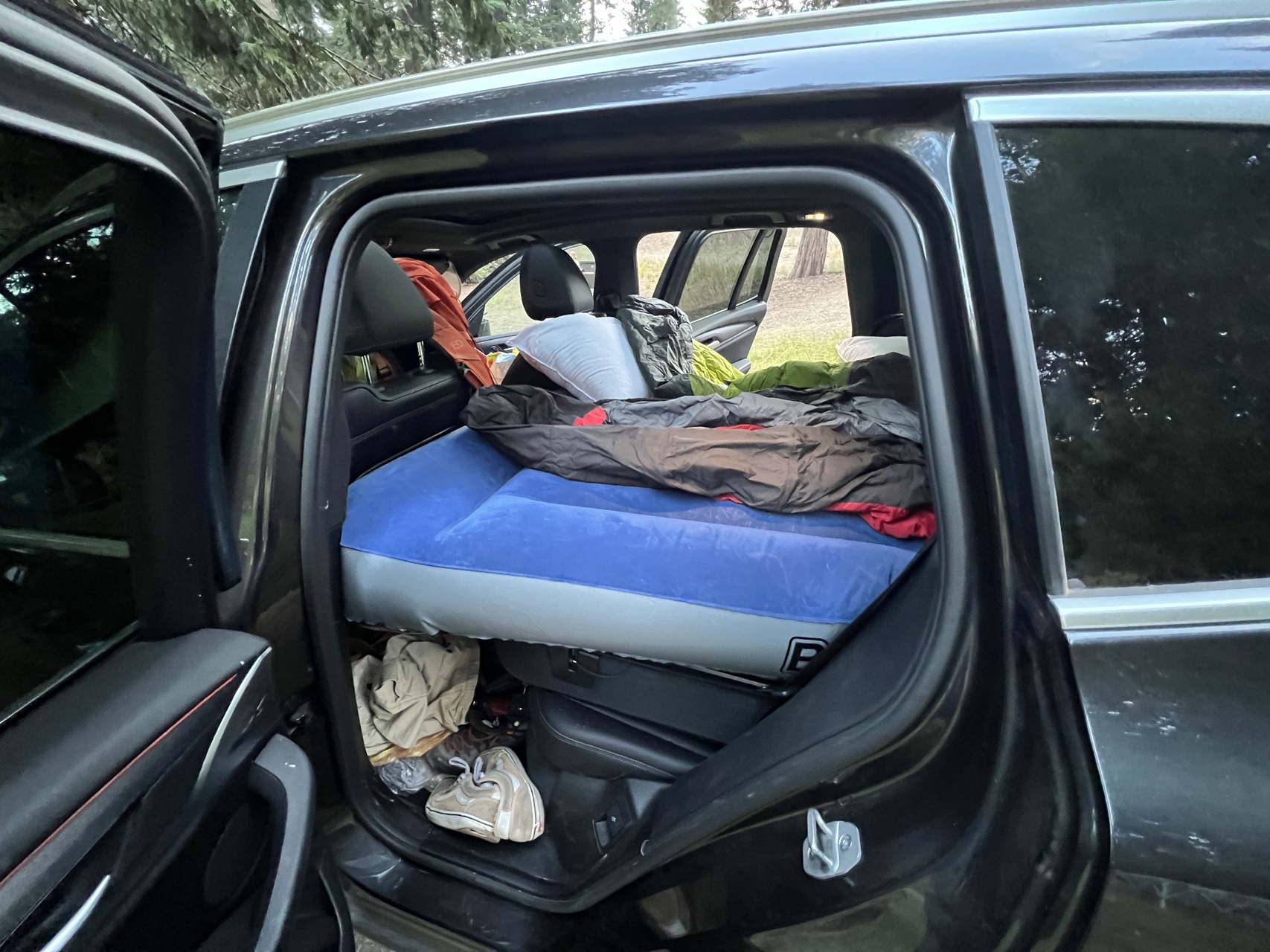
Yet, it was not as important that we slept well at night, as we had planned to spend this time photographing the stars - At least me. Our main goal was to capture the beauty of the night sky, and for that, we knew a good night’s sleep would have to take a backseat.
Our highlights of the night
There are numerous locations in the USA that are perfect for capturing stunning photos of the Milky Way and the night sky. The list below is just a small selection of places that I found particularly appealing. I have personally attempted to take photos at each location and provided some details about each photo and location.
Joshua Tree National Park - & the full moon
Joshua Tree National Park is a captivating desert landscape located in southeastern California, where the Mojave and Colorado Deserts meet. Renowned for its iconic Joshua trees, which resemble twisted sculptures, the park offers stunning vistas, rugged rock formations, and unique plant life. It's a haven for outdoor enthusiasts, with activities like hiking, rock climbing, and camping under a star-filled sky. The park's dark skies make it an exceptional destination for stargazing and astrophotography, offering breathtaking views of the Milky Way. Joshua Tree is not just a natural wonder; it's a tranquil retreat that inspires awe and adventure.
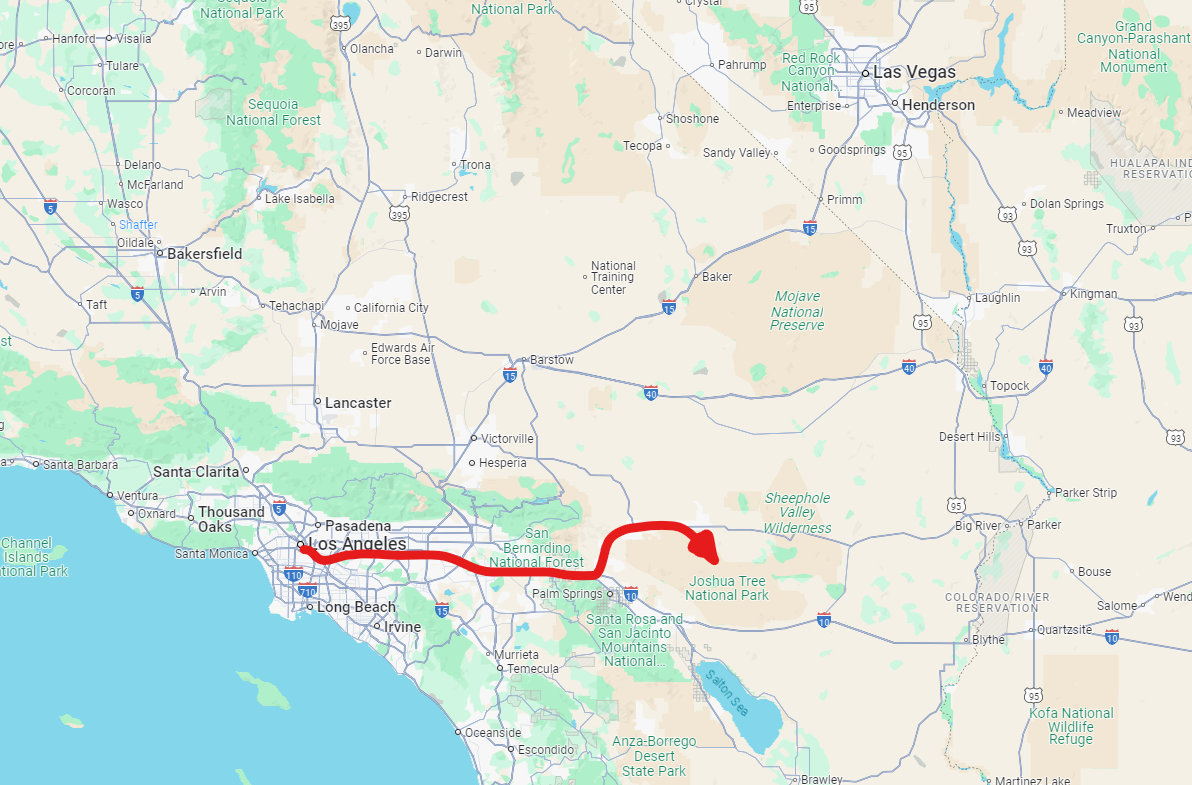
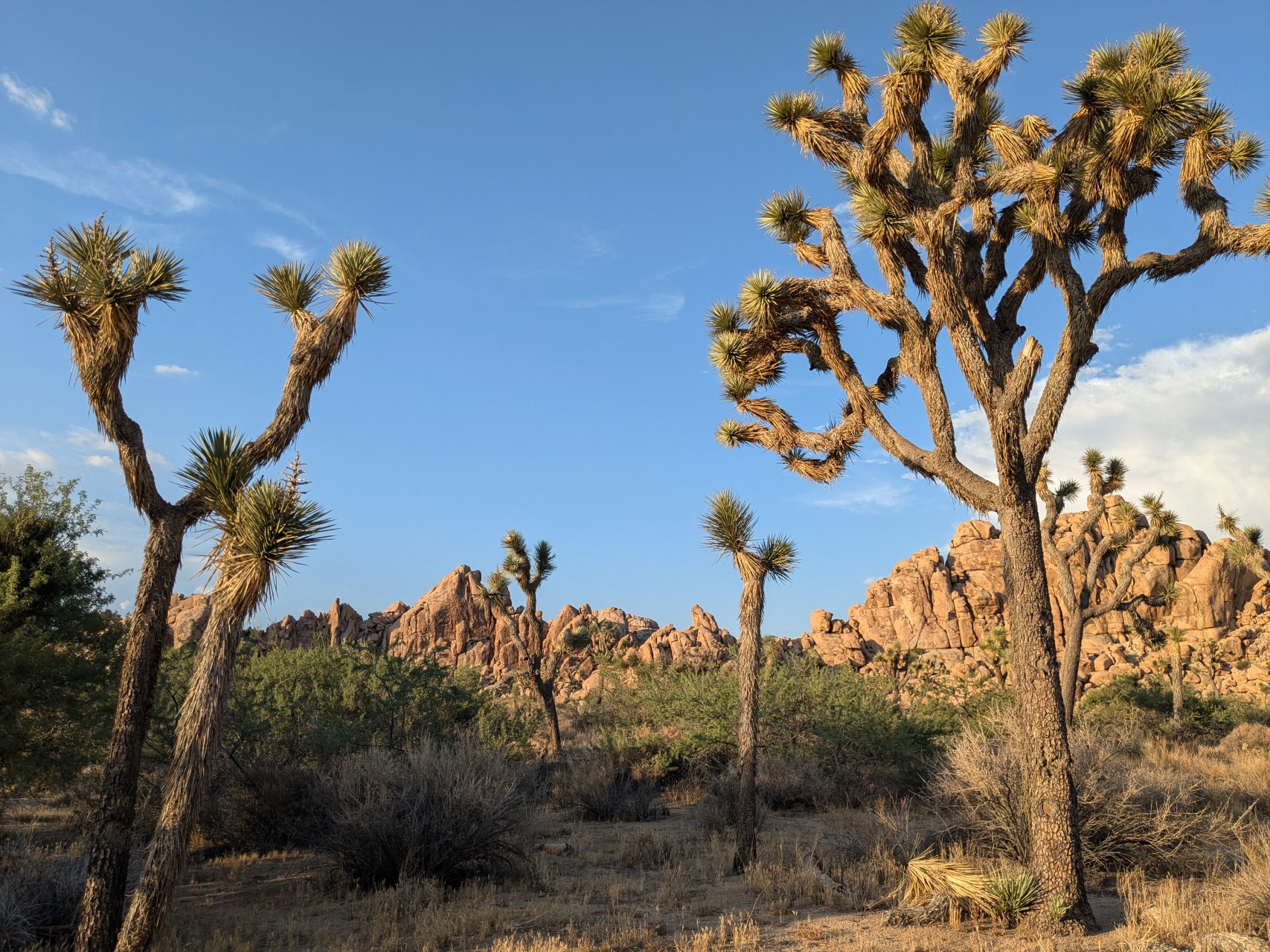
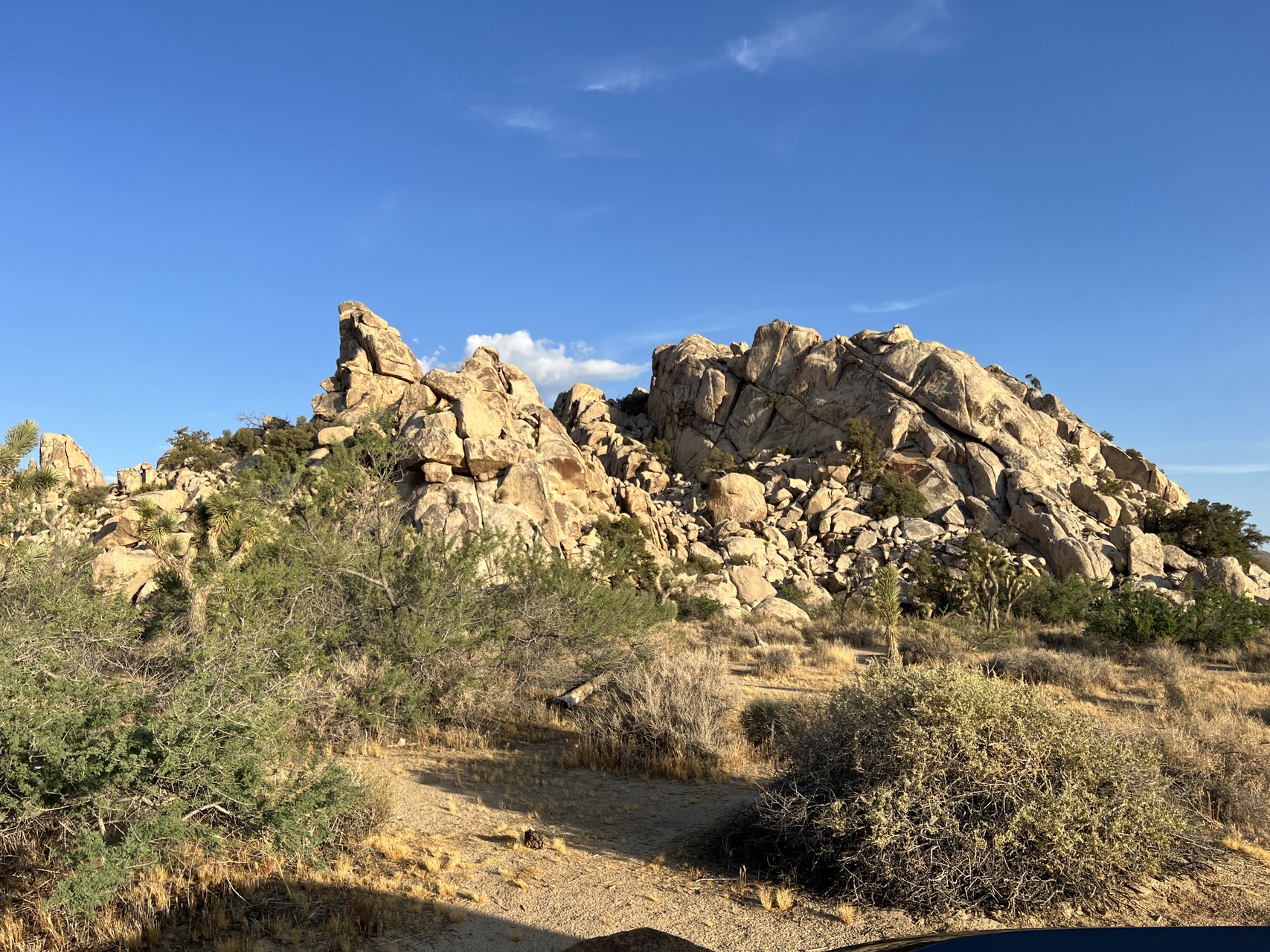
When searching for West Coast recommendations online, Joshua Tree National Park consistently tops the list as a must-visit destination — and we couldn't agree more. It was our first stop after leaving Los Angeles and marked our very first night sleeping in the car. To ease into this adventure, we booked a spot at the Black Rock Canyon Campground, conveniently located near the park's northern entrance. Arriving just before sunset, we decided to head straight into the park to catch the evening light. From the moment we entered, we were captivated by the striking beauty of the desert landscape and the iconic Joshua trees. While the full moon's brightness made astrophotography less ideal, we managed to capture two stunning time-lapses of the sunset. Although we didn’t get to photograph the Milky Way this time, Joshua Tree is renowned for its dark skies, and the iconic Joshua trees make excellent foreground subjects for night sky photography. It’s a spot we’d love to revisit for that perfect shot.
Grand Canyon, Horseshoe Bend, ...
The full moon's brightness continued to challenge our astrophotography efforts for several days, putting our plans to capture the night sky on hold. As we moved deeper into the West Coast, we passed iconic landmarks like the Grand Canyon and the stunning landscapes around Page, Arizona, along with parts of the historic Route 66, soaking in the nostalgic vibes of this legendary road.



Although these places were perfect for astrophotography, we knew the full moon would wash out the stars. Instead of forcing it, we focused on other locations and captured time-lapses of the sunset at most iconic spots.

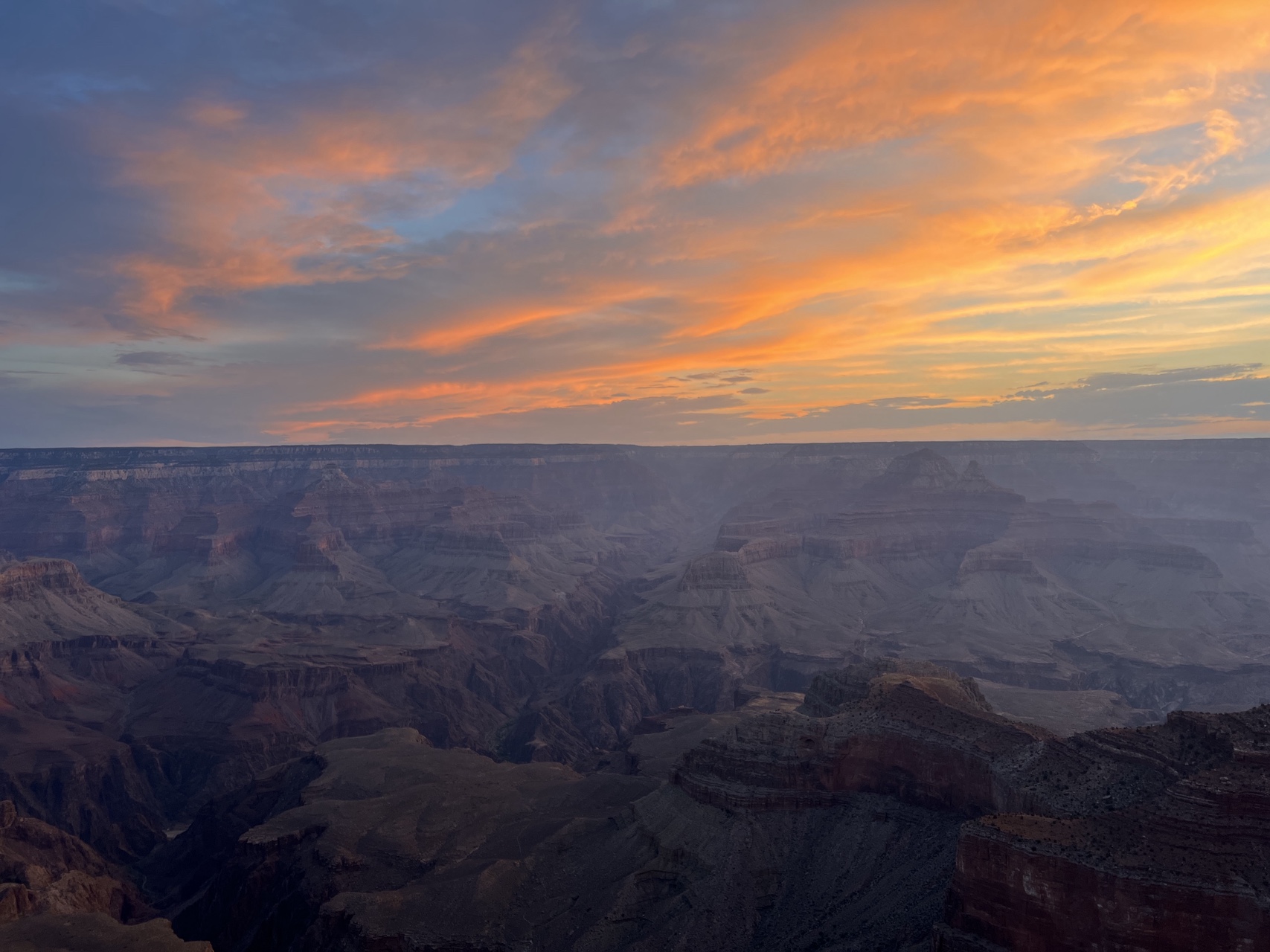

Monument Valley - Rain clouds everywhere
Monument Valley is a breathtaking desert landscape located on the Arizona-Utah border, known for its striking red sandstone formations. This iconic area is characterized by towering buttes and mesas that rise dramatically from the flat desert floor, creating an otherworldly atmosphere. The valley is a popular spot for photographers and travelers alike, drawn by its unique rock structures like the famous Mittens, two massive rock formations that stand proudly against the horizon. Rich in Native American history and culture, Monument Valley is often regarded as one of the most recognizable landscapes in the American Southwest, offering stunning views that have been featured in numerous films and documentaries.


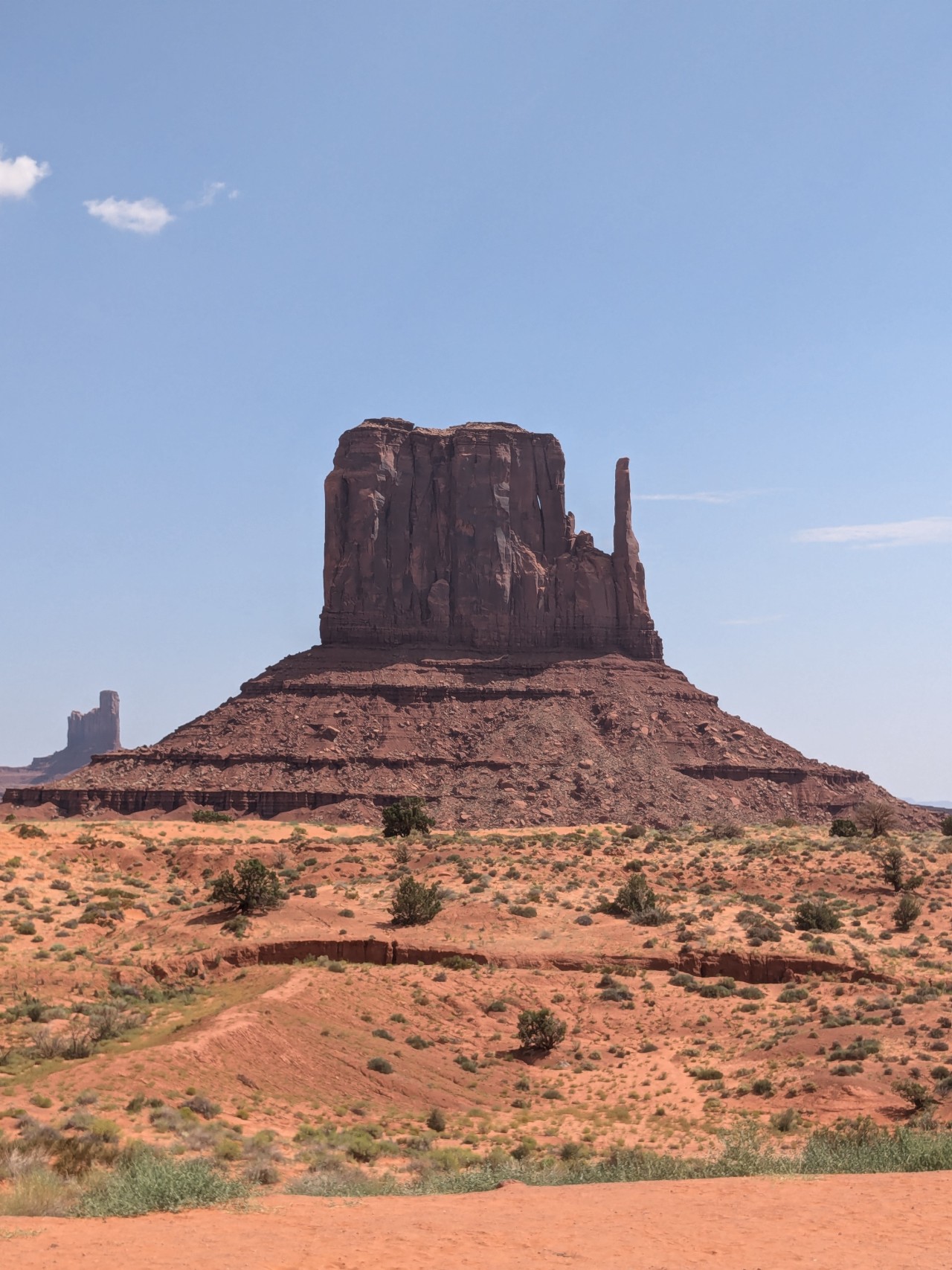
Monument Valley had always been on our list, and when we finally visited this incredible place, the moon was no longer a major issue for astrophotography. We were excited to start photographing the night sky, with the perfect foreground of the valley's striking rock formations. After some thorough scouting, we found a great spot where the Milky Way would rise just behind the rocks. We parked in a small lot near the location we had chosen, and with the moon phase finally in our favor, we were hopeful for clear skies. However, during July and August, thunderstorms are common, bringing in a lot of clouds, rain, and, of course, lightning. On that day, it was no different. We began a time-lapse before sunset, constantly guessing whether the clouds would clear or worsen. Just after sunset, a massive cloud front with rain moved in very quickly, which became visible in the time-lapse. Fortunately, we didn't stop the shot, and in the end, we got a beautiful photo of the Milky Way behind the rocks, along with an impressive time-lapse capturing the ever-changing sky.
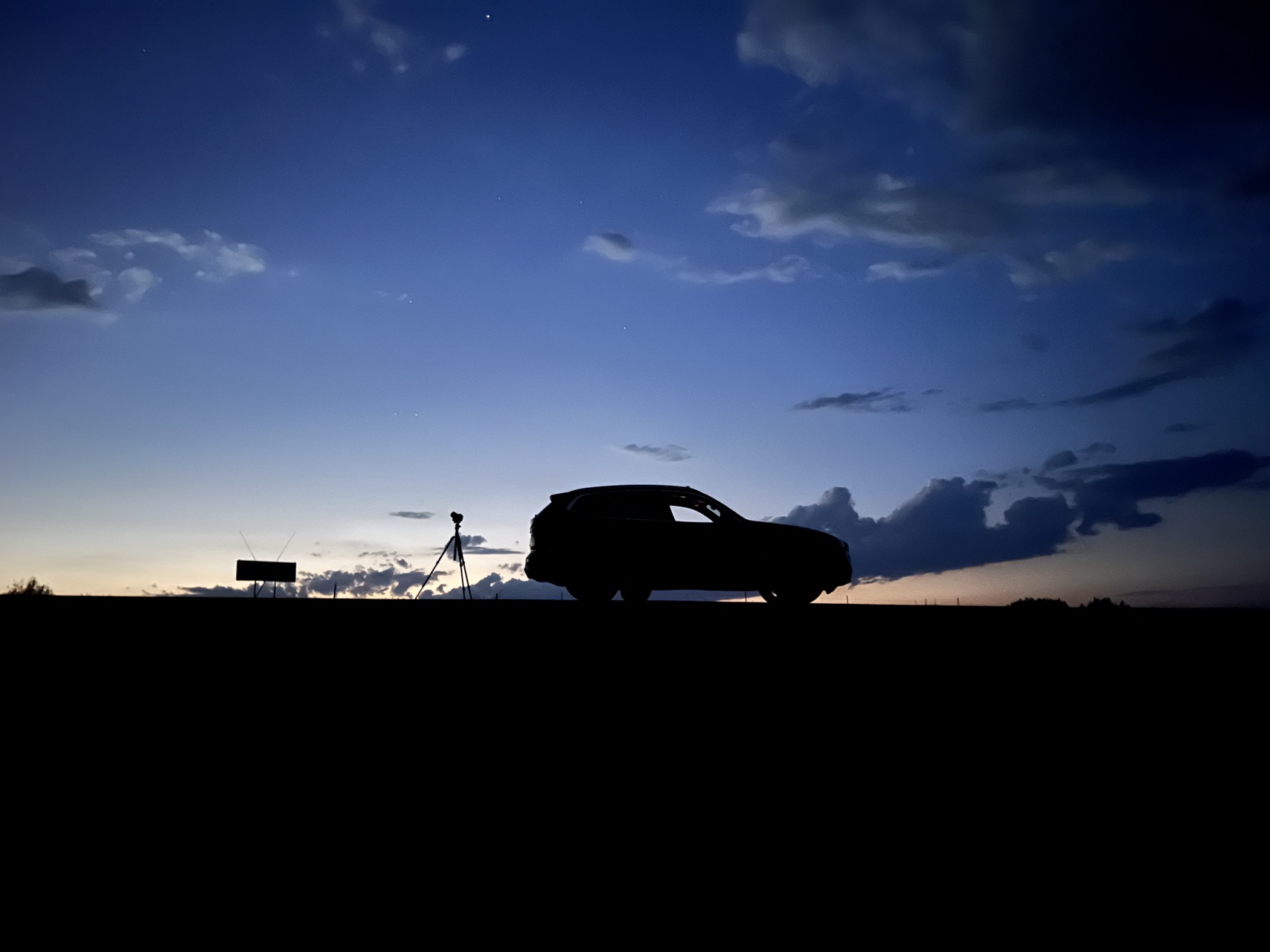


Celestial Sentinels - The Milky Way Over Monument Valley

Click to open image
Arches National Park - A long way down
Arches National Park, located in eastern Utah near the town of Moab, is a breathtaking showcase of natural sandstone formations, vibrant red rock landscapes, and over 2,000 documented arches. Spanning 76,000 acres, the park is a geological wonderland, shaped by millions of years of erosion, weathering, and natural forces. Visitors are greeted by iconic landmarks like Delicate Arch, Landscape Arch, and Double Arch, each offering unique photo opportunities and incredible views. The park's rugged beauty attracts outdoor enthusiasts, hikers, and photographers alike, with trails ranging from easy strolls to challenging climbs. Arches is also an International Dark Sky Park, making it an exceptional location for stargazing and capturing the Milky Way. Whether you're exploring during the golden hours of sunrise and sunset or under a blanket of stars, Arches National Park promises an unforgettable experience.

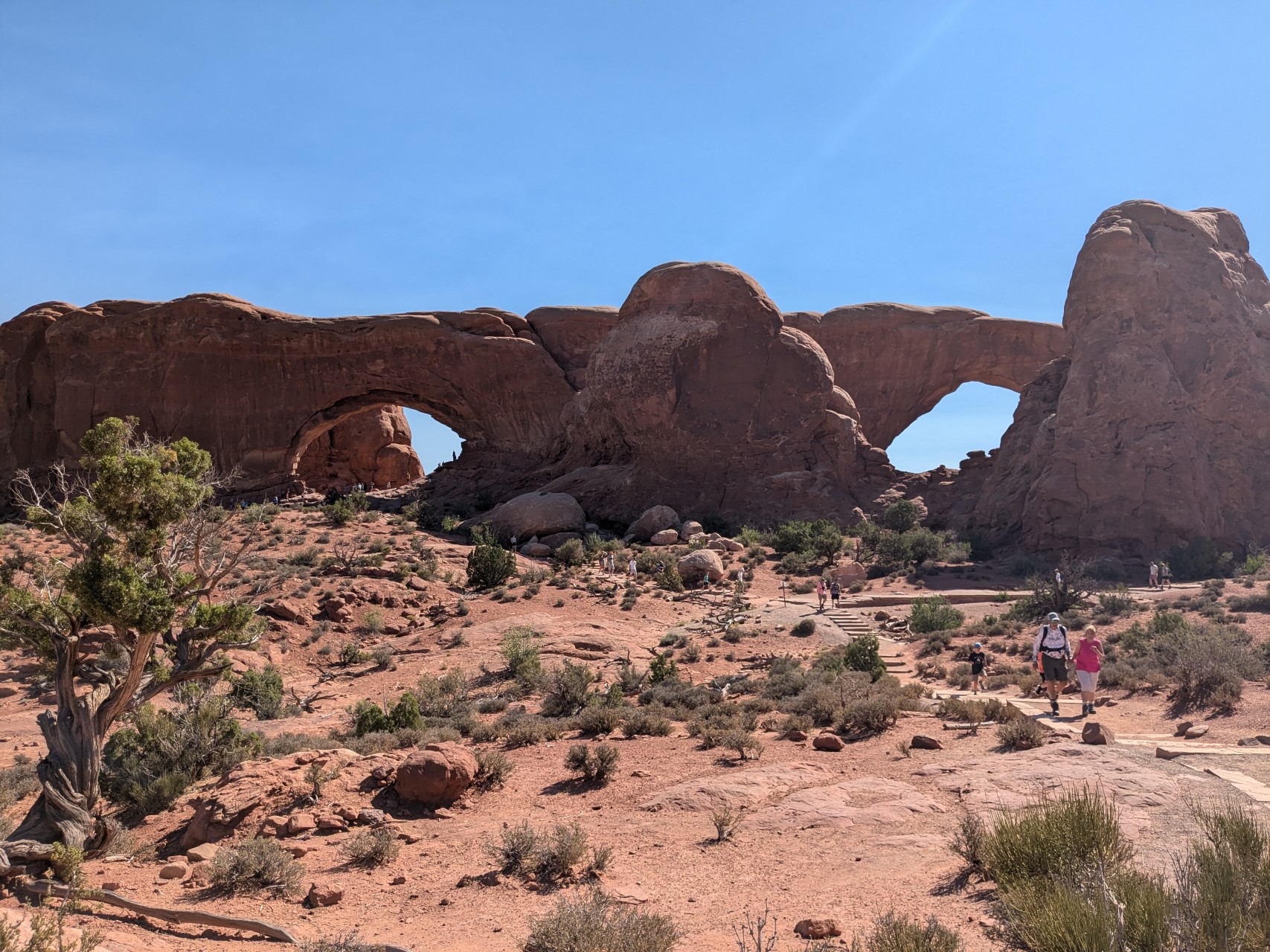

After visiting Monument Valley, we set our sights on Arches National Park—a destination that wasn’t originally on our itinerary. However, after hearing numerous recommendations, we decided to adjust our road trip route slightly to include this iconic park. We booked a spot at the Devils Garden Campground, allowing us the unique experience of sleeping directly within the park. Being an International Dark Sky Park, Arches is renowned for its exceptional stargazing opportunities, making it a perfect location for astrophotography. With only one night planned in the park, we aimed to maximize our time and sought the best arch aligned with the Milky Way. Our choice landed on the famous Delicate Arch, a stunning freestanding formation that has become a symbol of Utah, standing at 16 meters high and offering dramatic views. Reaching the arch requires a one-hour hike, so we set out two hours before sunset to ensure we arrived with plenty of time. As it turned out, we weren’t the only ones with this plan. Along the way and at the arch itself, we enjoyed the company of fellow travelers from around the world, making the experience even more memorable.

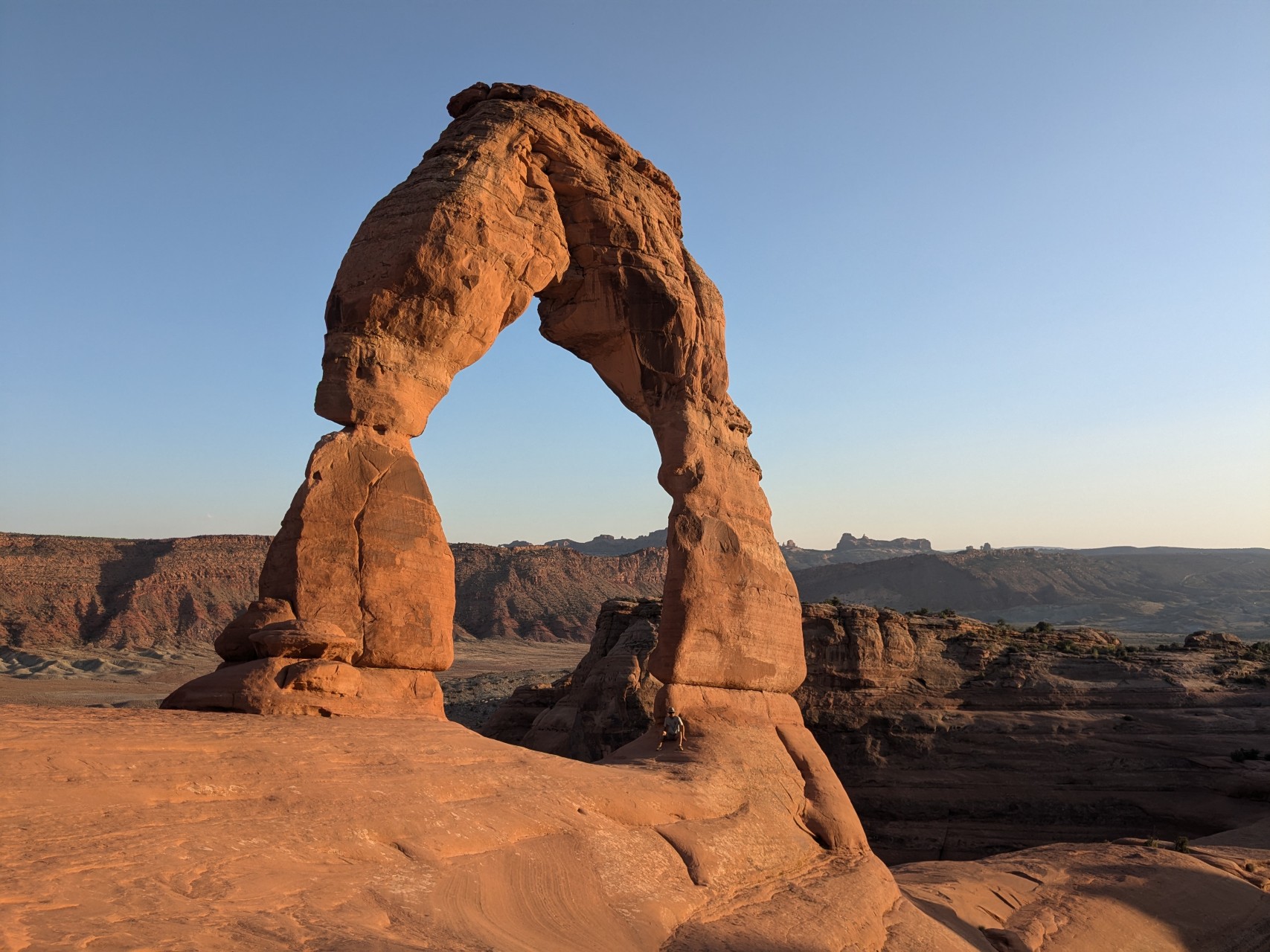

At the top, we set up the camera for a sunset timelapse. Unfortunately, the popularity of the view meant many people were enjoying the scenery, which somewhat disrupted the timelapse. I might eventually find time to edit out all the people, but for now, it remains as is. After a stunning sunset, the crowd thinned out, allowing us to capture a short timelapse of the Milky Way and a beautiful shot with the Milky Way framed behind Delicate Arch. We ended up spending several hours at the arch, but it never got boring—new people arrived to chat with, and the scenery remained captivating. After about five hours, we began the descent with another astrophotographer. It was fortunate we joined him, as he had a Garmin GPS tracker with the exact route, making the otherwise challenging hike in the dark much easier. Along the way, we even spotted a few scorpions, adding a unique touch to the experience. After the rewarding hike and an eventful day, we slept soundly in the back of our car.


Galactic Gateway - The Delicate Arch Under the Milky Way

Click to open image
Bryce Canyon
Bryce Canyon National Park, located in southern Utah, is a natural wonder unlike any other. Famous for its striking amphitheaters filled with vibrant red, orange, and white hoodoos—unique rock spires formed by millions of years of erosion—the park offers an otherworldly landscape that captivates visitors. Sunrise and Sunset Points are popular spots to witness the hoodoos glowing in the soft light, while the Navajo Loop Trail provides an up-close experience of this geological marvel. The high elevation of Bryce Canyon not only offers cooler temperatures compared to other Utah parks but also makes it a fantastic destination for stargazing. As part of the International Dark Sky Parks, it’s an ideal location to admire the Milky Way. Whether you’re hiking the scenic trails, soaking in panoramic views, or exploring the night sky, Bryce Canyon promises an unforgettable adventure.



Bryce Canyon was always part of our planned route and an incredible stop on the way to our next destination. Taking full advantage of the breathtaking surroundings, we made sure to capture the Milky Way in this stunning location. In addition to a timelapse of the sunset, we were able to create a mesmerizing timelapse of the rising Milky Way behind the iconic hoodoos. One of the highlights was capturing a fantastic 360-degree night-sky panorama within the canyon, offering a unique perspective of the stars and rock formations.
Under the Cosmic Canopy: Bryce Canyon at Night

Click to open image
Zion National Park - Mountain lions and the Milky Way
Zion National Park, located in southern Utah, is a stunning natural haven known for its towering sandstone cliffs, narrow slot canyons, and vibrant desert landscapes. This park offers a striking contrast of colors, with red and orange rock formations set against lush green vegetation and clear blue skies. Adventurers can explore iconic trails like Angels Landing or The Narrows, while photographers will find endless opportunities to capture the interplay of light and shadow, especially during sunrise and sunset. Zion's unique geology and diverse ecosystems make it a must-visit destination for nature enthusiasts and outdoor lovers alike. The park is also home to mountain lions, which are every now and then spotted by visitors. While sightings are rare, these majestic creatures remind everyone of the wild and untamed beauty of Zion.

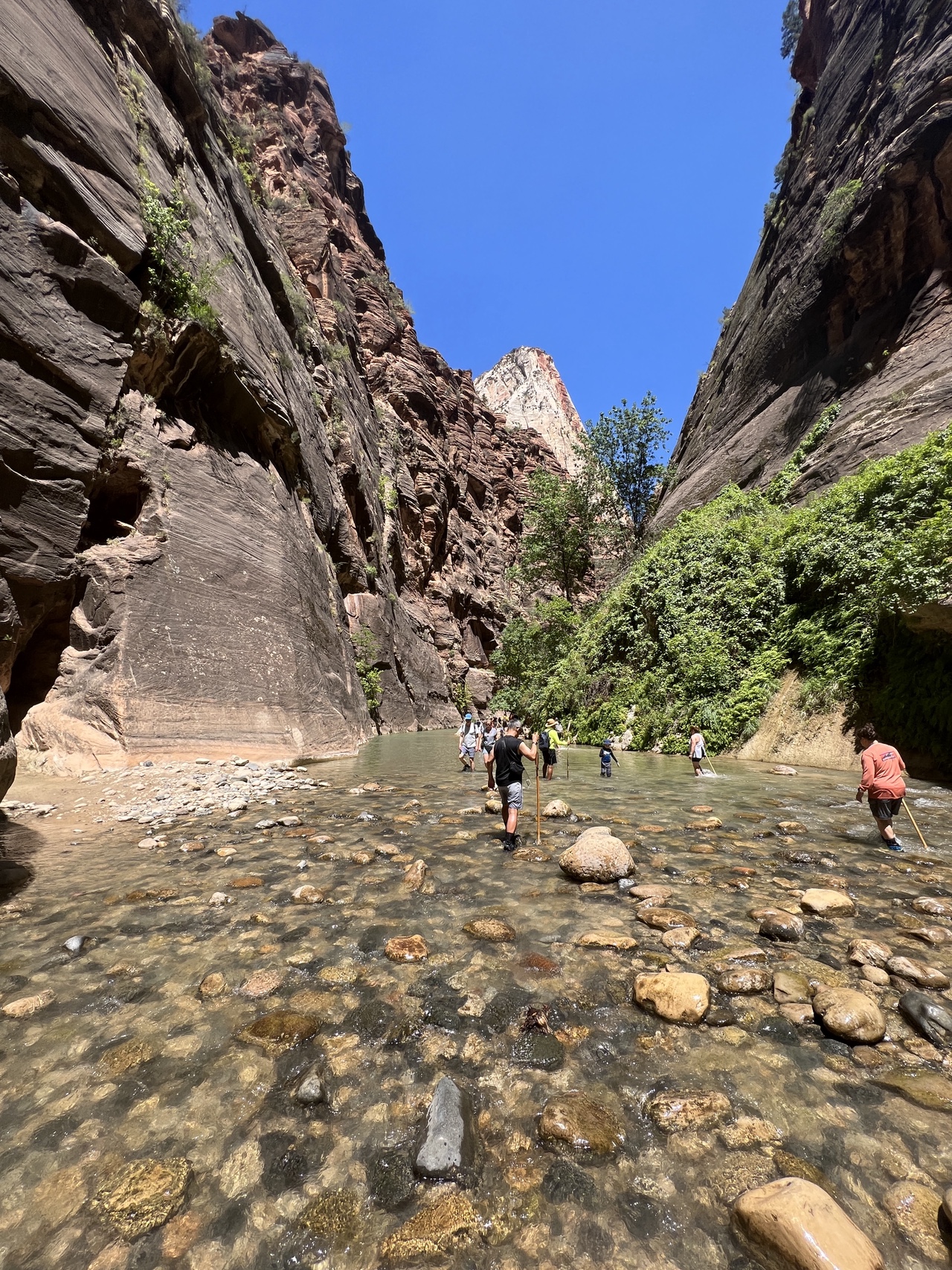

After visiting Bryce Canyon, we headed straight to Zion National Park and booked two nights at the Watchman Campground, giving us plenty of time to explore. One of our highlights was hiking The Narrows, an absolute must-do adventure that takes you through a stunning slot canyon with the river as your trail. We were also lucky enough to secure a permit for Angels Landing, one of Zion's most famous and challenging hikes, known for its narrow ridge and breathtaking views from the summit. On the day of our permit, the weather was perfect, and the hike started out beautifully until we reached the checkpoint where rangers verified permits. Unfortunately, the trail had to be closed due to a lady who had injured her ankle, and we weren’t able to complete the hike. Despite this, the journey itself was rewarding, and we discovered some incredible spots along the way that seemed ideal for astrophotography and time-lapse shots. We absolutely love Zion National Park for its breathtaking landscapes and unforgettable experiences.
On our first night in Zion, we decided to take it easy, spending the evening relaxing and doing some astrophotography right at the campground, conveniently next to our car. We also attended a ranger talk, where we learned some fascinating historical facts about the national park. The ranger mentioned the presence of mountain lions in the area and noted that a mother with cubs had been spotted just a few days earlier near common areas of the park. This was particularly striking information, given our plan to focus on astrophotography during dusk and dawn—the times when mountain lions are most active. With this in mind, the ranger’s lack of enthusiasm to join us, and the fact that the park is inaccessible after dark due to the shuttle buses ceasing operation and private cars being prohibited, our plans for astrophotography within the park started to fade. It quickly became clear that the campground might be our only safe and accessible location for night sky photography.
The next day, after a hike in the national park, we learned that there is a special permit available that allows visitors to enter the park with a private car, even at night. This meant that the beautiful locations we had seen during our daytime hikes were now accessible after dark. With the permit, we could drive to the parking lots where the shuttle buses typically stop and then hike to the spots we wanted to photograph. However, the issue of mountain lions remained. To ease our concerns, we asked two more rangers about the situation. One of them reassured us, giving us useful advice: make plenty of noise while hiking, always give the mountain lion space to flee, and keep stones and sticks on hand for protection. Additionally, we were told to mount our headlights in a way that illuminated both forward and backward, preventing the mountain lion from targeting our necks. With these precautions, we felt much safer and confident that we could handle the situation if it arose.
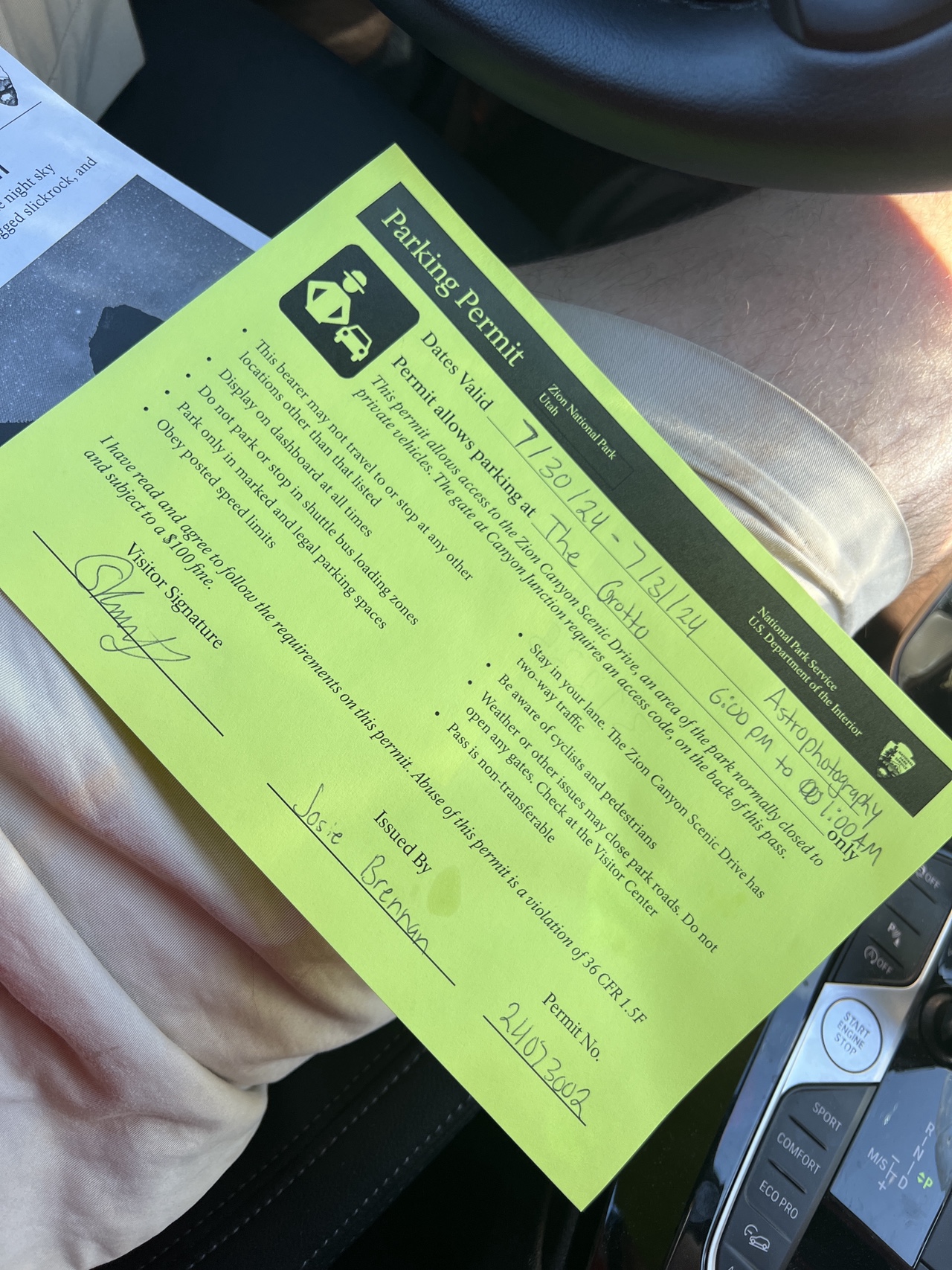
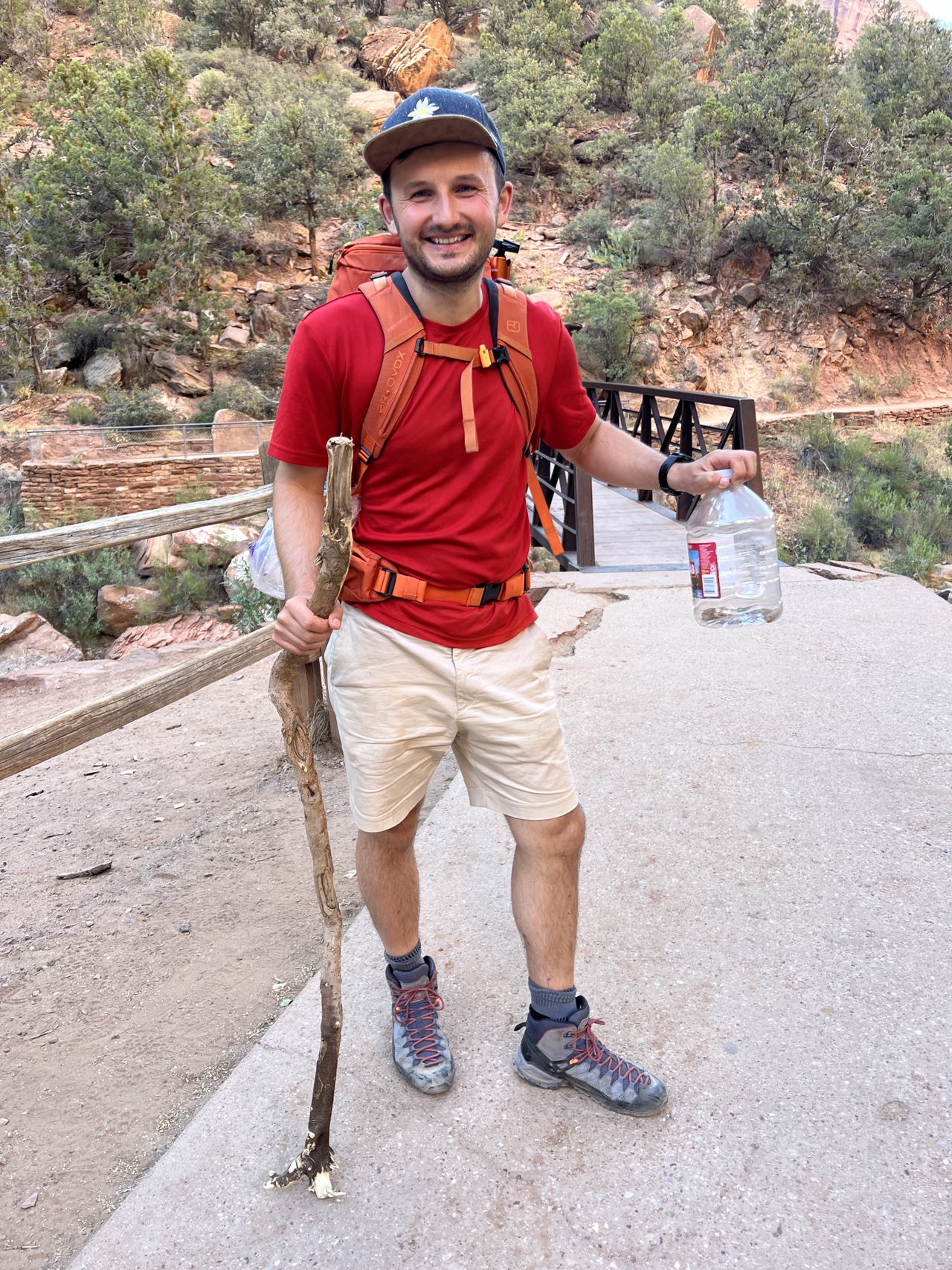

At the visitor center, we were able to get the special permit, so we felt we had to go through with it. Equipped with sticks, rocks, and a makeshift rustle, we set out, knowing that the chances of encountering a mountain lion were very slim, but our gut feeling still wasn’t at ease. We hiked for about an hour into the national park to a beautiful spot with a stunning view of Zion National Park. We set up a time-lapse and planned to capture the Milky Way rising just behind the peaks in about three hours. As it got darker, our uneasy feeling didn’t go away—in fact, it might have gotten worse. After sunset, we started to feel unsafe. We were at a spot where there was only one way up if a mountain lion were to approach from the valley, and a narrow, unsafe path down if it came from above. So, we decided to turn back and head down. The hour-long hike in the dark through the bushes, knowing there might be a mountain lion, is something we’ll for sure remember for a long time. While we’re sure we were always safe and the likelihood of crossing a mountain lion was near zero, stopping and returning early still felt like the right decision.
Despite stopping earlier than expected, we still managed to capture a beautiful sunset time-lapse. Additionally, we were able to take some stunning photos of the stars from other locations. If you're more comfortable with the idea of encountering mountain lions, I’d be curious to see your photos.
Celestial Symphony - The Milky Way Over Zion's Peaks

Click to open image
Death Valley - Sauna during night
Death Valley, located in Eastern California, is one of the most extreme and captivating landscapes in the United States. Known for its scorching temperatures and arid conditions, it holds the record for the hottest temperature ever recorded on Earth. Despite its harsh environment, the valley is rich in natural beauty, featuring unique geological formations such as the Mesquite Flat Sand Dunes, Badwater Basin – the lowest point in North America – and Artist's Palette, a kaleidoscope of colorful hills. At night, Death Valley transforms into a stargazer's paradise, offering some of the darkest skies in the country, making it a prime destination for astrophotography and celestial observations.
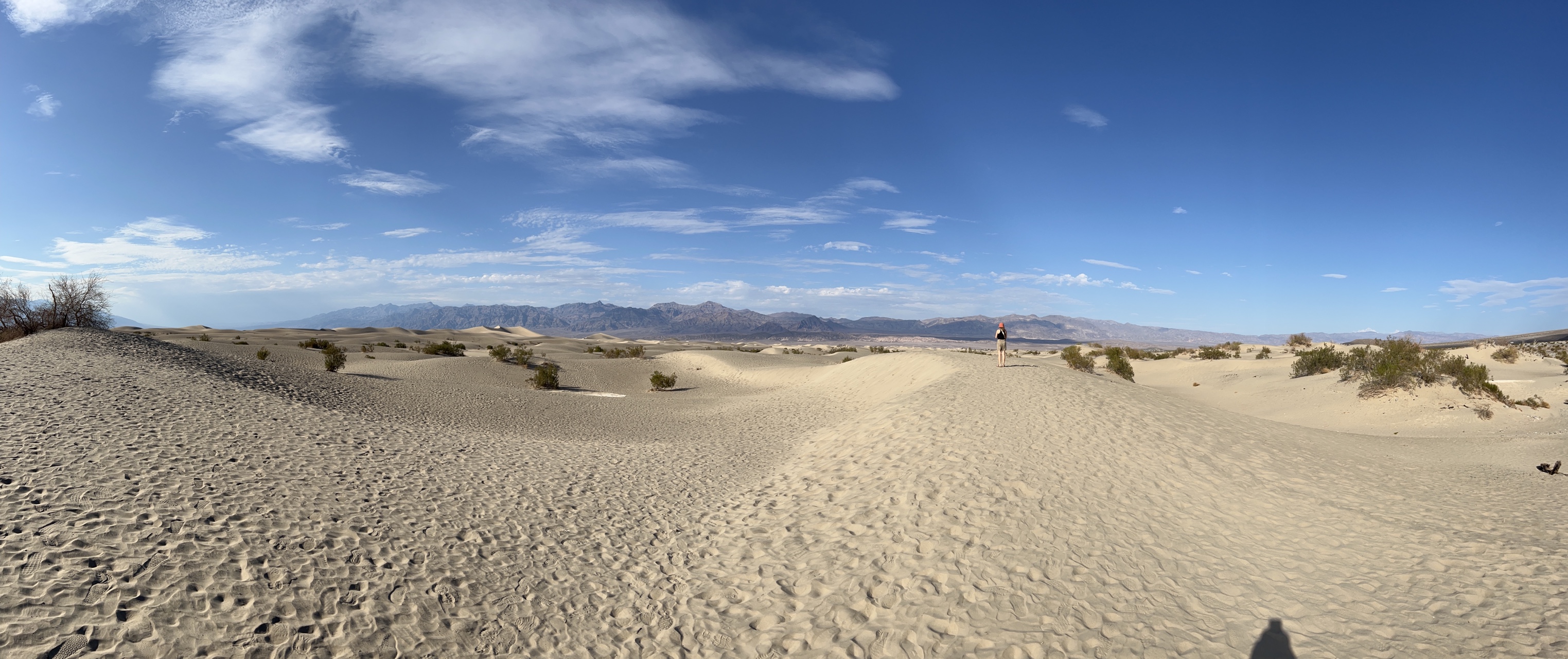


After visiting Zion National Park, we made our way to Las Vegas, hoping to boost our travel funds with a few rounds of luck. Some games went our way, others didn’t, but soon it was time to move on to our next destination: Death Valley. We’d heard stories about the extreme temperatures, and experiencing it firsthand confirmed just how otherworldly it felt. During the day, we explored the valley and its viewpoints, marveling at its unique beauty. By night, we set out to capture the famously dark skies, heading to the Devil’s Golf Course. The jagged, salty terrain was unlike anything we’d seen before, and we eagerly set up a time-lapse and snapped astrophotography shots. All the while, we kept our fingers crossed that the gate - about 1 km away - wouldn’t be closed behind us and battled the relentless nighttime heat. Despite the challenges, the stunning place, photos and time-lapse made it a truly memorable and worthwhile stop.
Desert Dreams: The Milky Way Over Death Valley

Click to open image
Yosemite National Park - Brother Bear
Yosemite National Park, located in the Sierra Nevada mountains of California, is a breathtaking natural wonder renowned for its towering granite cliffs, ancient sequoias, and cascading waterfalls. Iconic landmarks like El Capitan, Half Dome, and Yosemite Falls draw millions of visitors each year, offering unparalleled opportunities for hiking, climbing, and photography. The park's diverse ecosystems range from lush meadows and alpine lakes to dense forests and rocky peaks, making it a haven for wildlife and nature enthusiasts. Whether marveling at the views from Glacier Point or exploring the tranquil beauty of Tuolumne Meadows, Yosemite offers an unforgettable experience in one of America’s most cherished landscapes.


After leaving Death Valley, we made our way to Lake Tahoe, where we spent a few relaxing days by the lakeside, enjoying the calm and beauty of the area. From there, we headed to Yosemite National Park, one of the most famous parks in the USA. We highly recommend reserving a spot early, as only a limited number of vehicles are allowed in each day. Since we had booked a spot at the Hodgdon Meadow Campground, we were automatically granted entry to the park. As soon as we arrived, we were immediately in awe of the park's stunning beauty, with its towering cliffs, lush forests, and incredible landscapes.



During the day, we hiked to some beautiful waterfalls and explored the valley, where we were treated to stunning views of El Capitan and the park itself. We also enjoyed refreshing swims in one of the lakes, making the most of the warm weather. One of the highlights of our hikes was spotting a bear with two cubs. With the necessary respect and maintaining a safe distance, it was a truly unforgettable experience. In the evenings, we focused on capturing the beauty of the park through time-lapse photography, including one of the sunsets with Half Dome in the frame. We also tried our hand at astrophotography, experimenting with interesting foreground subjects under the starry sky.
Celestial Canopy: A Tree's Night Watch in Yosemite

Click to open image
Highway 1 - Detours
Highway 1, also known as the Pacific Coast Highway, is one of the most iconic and scenic routes in the United States. Stretching along the California coastline, it offers breathtaking views of the Pacific Ocean, rugged cliffs, and charming coastal towns. The road winds through famous spots like Big Sur, Malibu, and Monterey, providing access to pristine beaches, dramatic rock formations, and lush forests. Whether you're stopping at iconic landmarks such as Bixby Creek Bridge or simply enjoying the drive with the ocean breeze in your hair, Highway 1 is a must-do road trip for anyone seeking a glimpse of California's natural beauty.


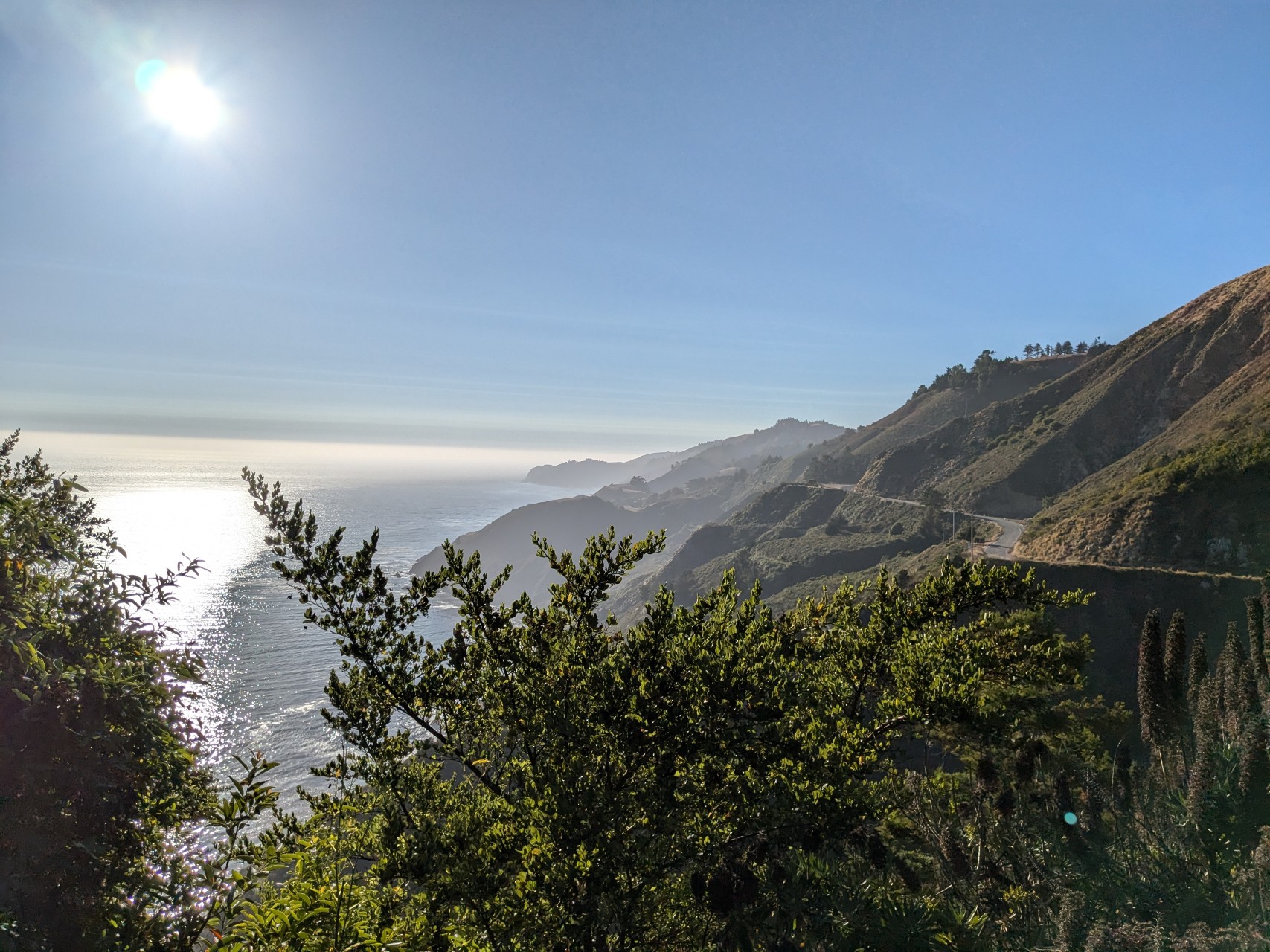
After leaving Yosemite National Park, we headed to Sequoia National Park and then made our way straight to San Francisco. After a wonderful time in the city, it was time to slowly make our way back to LA. Of course, we couldn’t miss taking the Highway 1 along the coast. Unfortunately, due to a road closure halfway, we could only drive parts of the scenic route before having to turn back. Despite this, it was totally worth it. The Pacific Coast Highway, with its dramatic cliffs, rolling waves, and breathtaking ocean views, is undeniably one of the most beautiful stretches of road in the world.


While driving along Highway 1, we passed the incredible Bixby Creek Bridge. It’s an architectural masterpiece set against some of the most beautiful scenery on the coast. The bridge, surrounded by cliffs and the vast ocean, provided the perfect backdrop for a night of stargazing, especially since the peak of the Perseid Meteor Shower had just occurred the day before. We decided to explore the area around the bridge and stumbled upon a small rise with a hidden trail through the bushes that led to a fantastic viewpoint. After sunset, we set up the camera, hoping to catch a few last meteors. The result was a stunning photograph, capturing both the beauty of the bridge and the fleeting meteors in the starry sky.
Starlit Majesty - Bixby Creek Bridge Under the Perseid Meteor Shower

Click to open image
Cosmic Arches - Bixby Creek Bridge Under the Stars

Click to open image
Wrapping Up the Adventure
We can definitely say that the West Coast is truly amazing. We’d heard a lot of great things before and had high expectations, but we were still pleasantly surprised. The West Coast offers not only stunning landscapes but also incredible opportunities for night sky photography, thanks to its dark skies. I’ve provided just a brief overview of what we managed to do and some insights into a few of the locations. If you’ve made it this far and are planning a trip to the East Coast, or have already been, I’d love to hear about your experience and your results.
Cheers, Sebastian

Relaxing in the car with the AC on when it’s 47°C (116°F) outside feels like a true escape from the scorching heat.

System and order are very important when living or sleeping in the car.

When there's a stop sign due to the heat...
